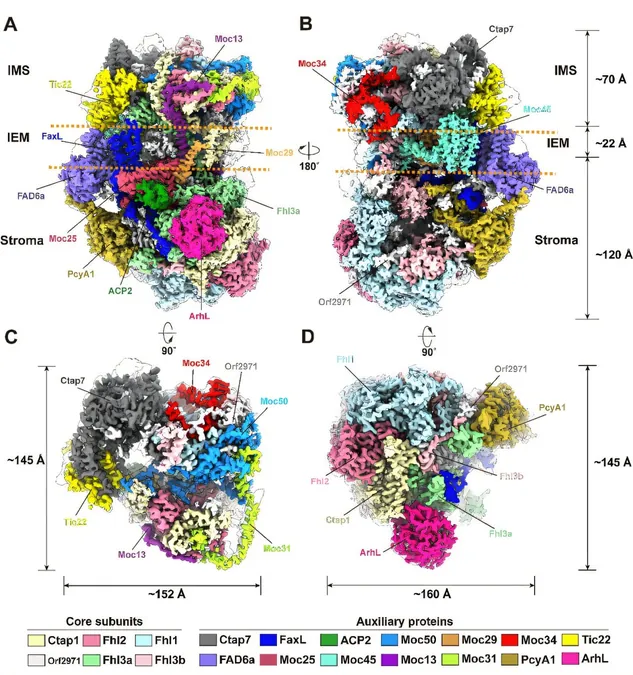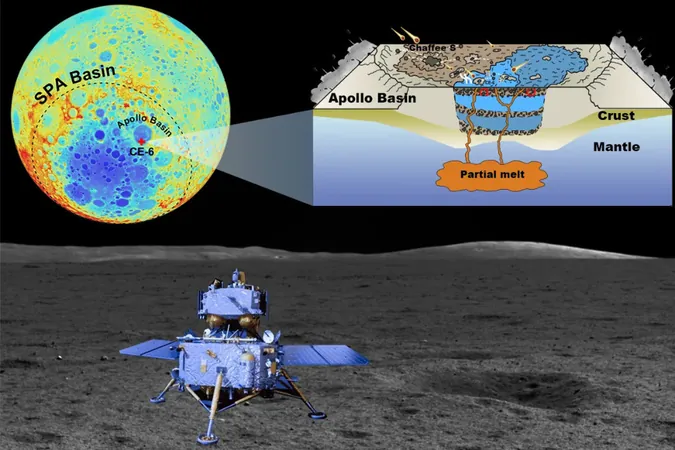
Groundbreaking Discovery: Scientists Unveil How Plant Proteins are Imported into Chloroplasts!
2024-11-12
Author: Daniel
Introduction
In a monumental breakthrough for plant biology, researchers have elucidated the intricate structural basis of how precursor proteins are imported into chloroplasts, the energy factories of plant cells. Central to this process is the TOC (Translocon at the Outer envelope of Chloroplasts) and TIC (Translocon at the Inner envelope of Chloroplasts) supercomplex, which is essential for the transport of the majority of these vital proteins from the cytoplasm into the chloroplast.
Key Discoveries
Recent advancements shed light on the motor protein complex that plays a pivotal role in driving the movement of these precursor proteins across the chloroplast membranes. Despite the critical importance of this mechanism, prior to this study, there was limited knowledge regarding the specific protein composition and the overall architecture of the motor complex.
Research Team and Findings
An ambitious research team from the Chinese Academy of Sciences, led by Prof. Li Mei and Prof. Yang Wenqiang, has successfully unveiled the high-resolution structure of the Orf2971-FtsHi complex, a chloroplast motor complex extracted from *Chlamydomonas reinhardtii*, a model green alga. Their findings, detailed in the esteemed journal *Molecular Plant*, not only illustrate the complexity of this protein assembly but also outline the potential pathways for the translocation of precursor proteins.
Structure of the Orf2971-FtsHi Complex
The Orf2971-FtsHi complex is a sophisticated assembly made up of 20 subunits derived from 19 distinct proteins. This remarkable structure traverses the inner membrane of the chloroplast, extending into both the intermembrane space and stromal side. The backbone of this complex, Orf2971, has a considerable molecular weight of around 341 kDa and is derived from the FtsH protease. It acts as a scaffold, directly interacting with 17 of the other 19 protein subunits, which is essential for constructing and stabilizing the entire assembly.
Mechanics of Protein Translocation
Diving deeper into the architecture, the study highlights that five FtsH-like proteins (including Orf2971 itself, along with Ctap1, Fhl1, Fhl2, and Fhl3) come together to form a heterohexameric, double-layered disk-like structure. This unique configuration generates the necessary pulling force that facilitates the translocation of precursor proteins, utilizing energy from ATP hydrolysis.
Advanced Research Techniques
Furthermore, the researchers employed advanced techniques such as surface plasmon resonance (SPR) and Gaussian accelerated molecular dynamic simulations. They uncovered a direct interaction between the Tic22 protein within the motor complex and the Toc75 protein from the TOC-TIC configuration, enhancing our understanding of how these complexes coordinate during the protein transport process.
Future Implications
Building on their findings, the team has proposed two models that illustrate the association between the TOC-TIC supercomplex and the motor protein complex. These models promise to enhance our comprehension of the complex machinery that enables the efficient translocation of proteins into chloroplasts, which is vital for the overall function and health of plant cells.
Conclusion
This exciting research marks a significant leap forward in our understanding of plant biology and has the potential to inform future studies aimed at enhancing agricultural productivity and developing better crop varieties. The implications of such discoveries extend beyond academia, potentially revolutionizing how we cultivate and utilize plants in a rapidly changing environment. Stay tuned for more stunning revelations in plant science!


 Brasil (PT)
Brasil (PT)
 Canada (EN)
Canada (EN)
 Chile (ES)
Chile (ES)
 Česko (CS)
Česko (CS)
 대한민국 (KO)
대한민국 (KO)
 España (ES)
España (ES)
 France (FR)
France (FR)
 Hong Kong (EN)
Hong Kong (EN)
 Italia (IT)
Italia (IT)
 日本 (JA)
日本 (JA)
 Magyarország (HU)
Magyarország (HU)
 Norge (NO)
Norge (NO)
 Polska (PL)
Polska (PL)
 Schweiz (DE)
Schweiz (DE)
 Singapore (EN)
Singapore (EN)
 Sverige (SV)
Sverige (SV)
 Suomi (FI)
Suomi (FI)
 Türkiye (TR)
Türkiye (TR)
 الإمارات العربية المتحدة (AR)
الإمارات العربية المتحدة (AR)